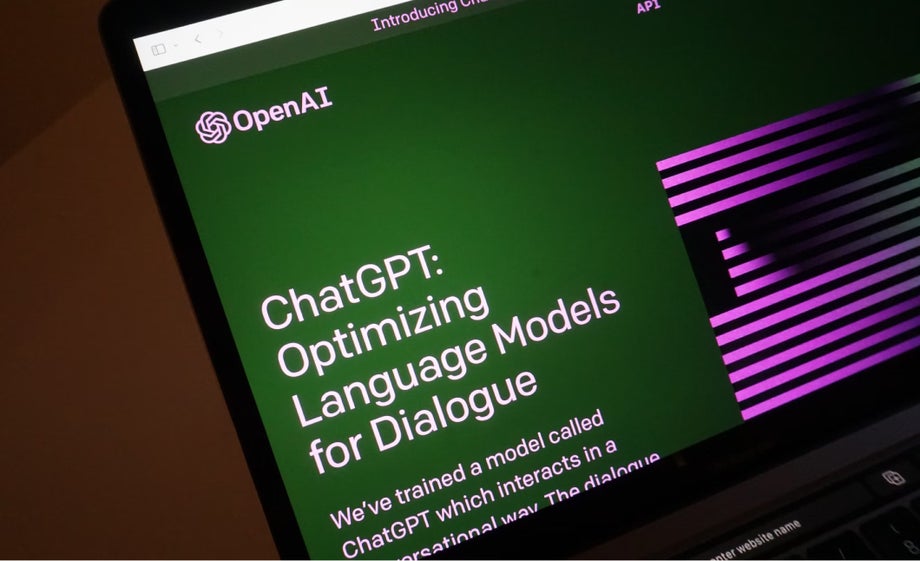

20.04.20238 mins read
From governments to universities, everyone is talking about ChatGPT. Reactions vary, and people see it as having different uses. When I heard about ChatGPT, I immediately thought, what if I could integrate it with Alexa? Wouldn’t it be great if Alexa could understand me no matter how I phrase the request?
Currently, artificial intelligence (AI) voice assistants usually need precise language to perform specific tasks. They only retain information from previous interactions if they are specifically programmed to do so. But what if that was no longer the case? What are the benefits and challenges of integrating large language models (LLM) like ChatGPT with voice assistants like Alexa or Siri?
First of all, in case you have been living under a rock, ChatGPT is an AI chatbot developed by OpenAI that enables users to ask questions using natural language processing (NLP) to generate human-like responses, replicating how people write and speak. It has been trained on massive amounts of text data and can read, summarise, and translate texts, predicting the words that will come next in a sentence. NLP allows ChatGPT to comprehend the true meaning of the text and recognise the sentiments and other elements necessary for constructing a proper conversation.
AI voice assistants are applications that interact with users through voice recognition and NLP, enabling them to understand and respond to voice commands. They depend on voice recognition software to capture spoken commands, NLP algorithms to understand the command's intent, and text-to-speech technology to convert back the response into speech. Voice assistants like Alexa or Siri use self-teaching algorithms to learn users' speech patterns, adjust to their voice, preferences and commands, and improve over time.
Enable more human conversations and interactions
Conversational memory refers to the ability of an AI agent, such as a chatbot or virtual assistant, to recollect and respond to multiple user inputs in a chat-like fashion, resulting in a coherent and seamless dialogue. Without such memory, each user input is treated independently, disregarding any and all prior interactions in the conversation. In models with smaller context windows, recent conversation content may be forgotten, leading to divergence into unrelated topics or even neglecting initial instructions.
Unlike Alexa and Siri, which are primarily programmed to offer information and perform tasks upon command, ChatGPT is intended to engage in a more fluid and natural exchange with users. Its conversational capabilities enable it to provide detailed and comprehensive responses to queries and sustain engaging and realistic conversations. ChatGPT excels in addressing conversation-specific contexts where the system needs to remember the previous exchanges with the user and consider what was said before to respond appropriately. By leveraging the information from past interactions, ChatGPT can produce more tailored and relevant responses, resulting in a more contextually fitting conversation.
Facilitates better understanding of users' intent
Voice assistants primarily depend on understanding the user's intent from their spoken commands to perform the desired task. This means that they analyse the user's utterances to determine the action they are requesting and then act accordingly.
ChatGPT works differently. It is good at identifying semantic meaning because it is a language model based on transformer architecture. The transformer architecture enables the system to understand the relationships between words and context. Also, it allows the system to analyse the meaning behind words and sentences to generate contextually appropriate and semantically meaningful responses.
For example, if we could integrate ChatGPT to voice assistants and let it explore the semantic meaning of the user's utterances, it might be possible for voice assistants to detect the correct intent automatically without any training utterances provided.
With the ability to accurately identify user intent, voice assistants could then offer personalised and effective responses, improving the overall user experience and engagement with the system.

Scope of conversational context
In the 2010s, general-purpose voice assistants were prevalent, whereas today, there has been a shift towards developing voice assistants tailored for specific domains. Depending on the system type, conversational context could vary. Voice assistants typically use different types of context: conversation-specific context, user context, domain-specific context and business context.
As mentioned earlier, ChatGPT excels in addressing the conversation-specific context, where it retains the memory of the previous exchanges with the user and considers the information discussed earlier to provide an appropriate response. By leveraging this capability, ChatGPT creates a more natural and personalised conversation experience.
However, ChatGPT has some limitations in handling user context, domain-specific context, and business context. These limitations arise because ChatGPT relies on statistical patterns and machine learning algorithms to generate responses. These algorithms can only work with the information fed into the model during training. For example, ChatGPT may have yet to be trained on data from a particular industry or may not have access to the specific vocabulary used in a particular domain or business.
Additional techniques and technologies may be needed to overcome these limitations, such as training models on more specific datasets, incorporating structured data, incorporating user profiles, integrating with business systems, or incorporating human expertise. While these approaches improve ChatGPT's ability to handle user, domain-specific, and business contexts, they do require additional resources and expertise to implement effectively.

Integrating ChatGPT with voice assistants like Alexa or Siri brings significant benefits such as:
- conversational memory
- intent recognition
- personalised responses.
Basically, ChatGPT could elevate the interactions between voice assistants and people to make them more fluid and human-like. However, the context scope remains challenging as ChatGPT has limitations in handling specific conversational contexts. Despite these challenges, ChatGPT is a highly effective tool that in time, will enable a more natural, engaging, and personalised experience. Some practitioners are already exploring potential integrations of ChatGPT into voice assistants, and it’s only a matter of time before we can chat with these assistants to get a more personalised and comprehensive conversational experience.

Interested in reading more consumer insights? Download our Digital Pulse: The current state of online shopping habits and behaviours in Ireland.


